
9 minute read
Help Your Child Make the Most of Childcare Preschool
Are You Ready to Send Your Child to Daycare or Preschool?
These strategies can help ease your child’s jitters for an easy transition and lead to a successful year of fun times and good friends.
“Both daycares and preschools offer kids experiences they might not get at home, such as exposure to a larger social environment that can help them learn how to get along well with others,” says Cathy Keller, the director of a preschool and infant care center. Who knew that 18-month-olds could have friends? When kids go to daycare and preschool, their schedules tend to fill up with playdates and birthday parties. Developmentally, kids who’ve done at least a year of preschool are more ready to jump into the learning environment of kindergarten, too.
“Preschool is an environment in which kids have the opportunity to use language in many different ways with others who are at the same developmental age,” says Jennifer Kurumada Chuang, the owner of a child care center and preschool. But, overall, preschool helps young, naturally egocentric kids learn how to exist with others in a classroom. “Preschoolers learn how to take turns, follow directions, pick up after themselves, stand in line, sit in a circle, raise their hand, use their words to express themselves instead of physically acting out and talk when it’s appropriate,” Kurumada Chuang says.
All told, your child’s early learning experiences can set the tone for years to come. To help your child prepare for daycare and preschool and reinforce the lessons he learns there, here’s the homework you can do that can make all the difference.
Ace the Drop-off
Pick the right daycare or preschool. “Separating from mom and dad can be tough for infants, toddlers and preschoolers, though some kids display it more aggressively than others,” says Keller. To make drop-off easier, choose a daycare or preschool you feel good about. “Parents telegraph their comfort and confidence about the school in so
CONTINUED NEXT PAGE >>>
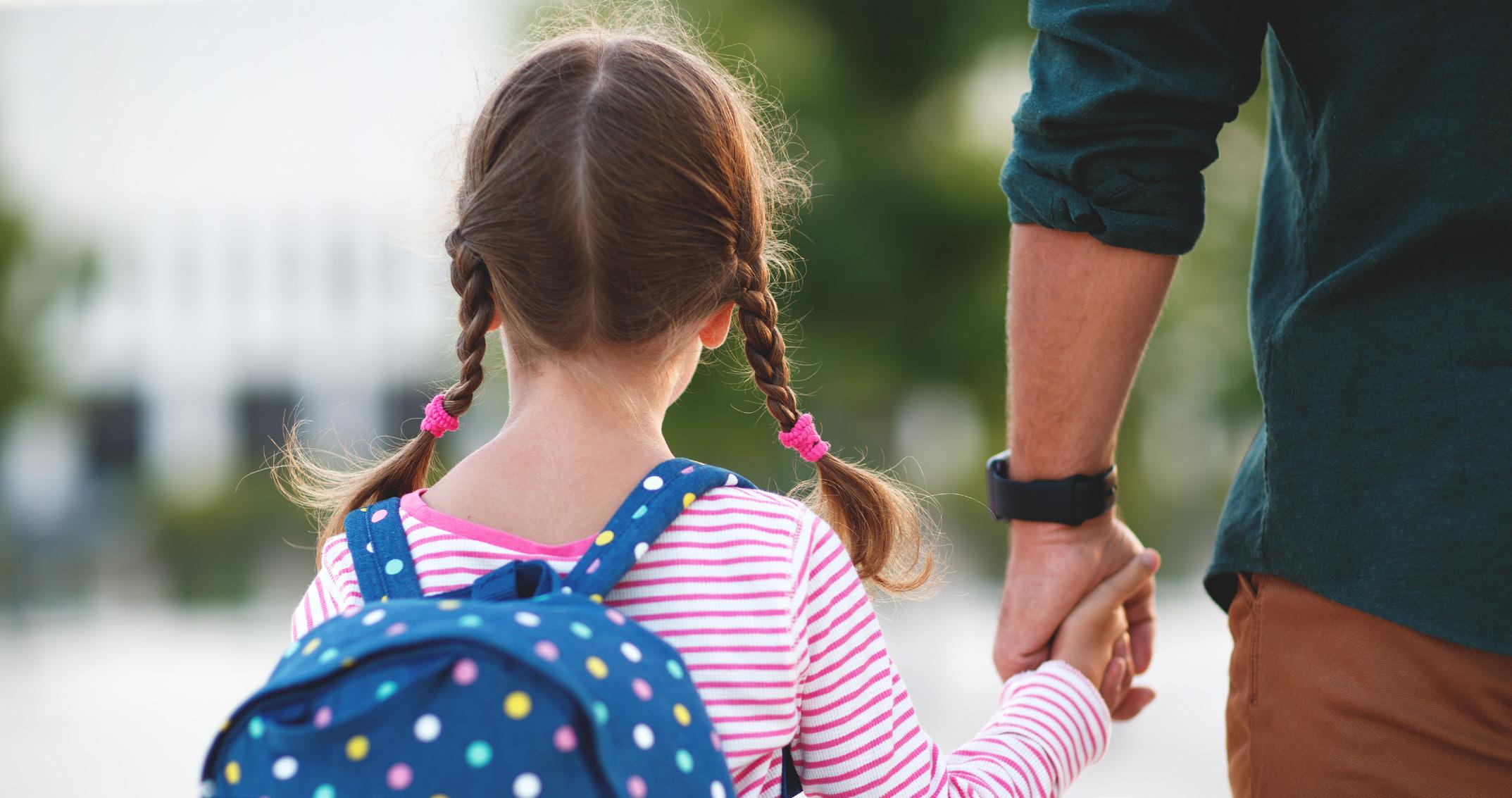
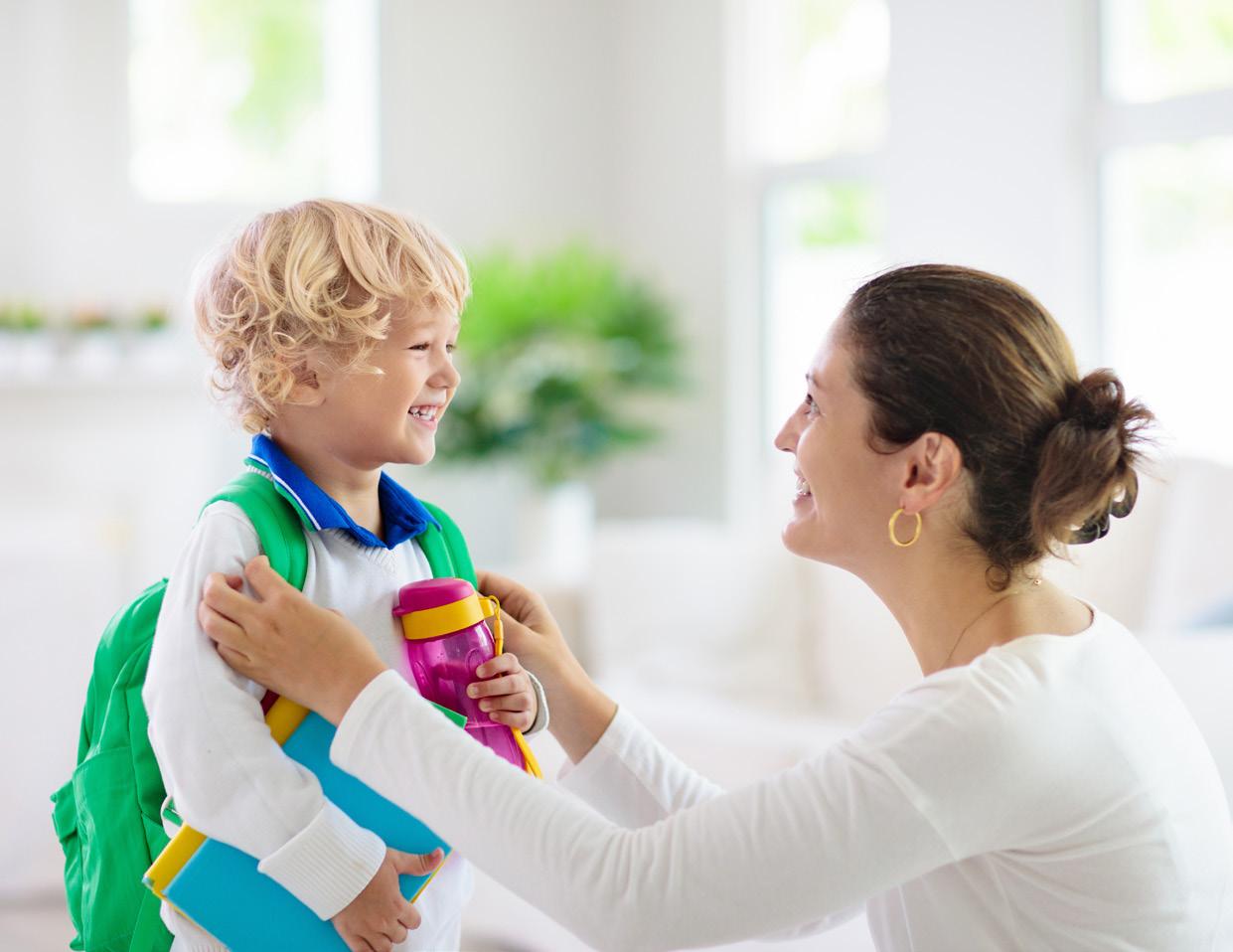
many ways to their kids,” says Keller. If you’re happy with your choice of school and know that your child is in a good learning situation, your child will pick up on your confidence and be OK with it, too, even if he initially doesn’t seem to like going there. And keep in mind that separation anxiety is oft en more painful for you than your child. “Children are amazingly adaptable,” Keller says.
Manage Morning Madness
To help make drop-off at daycare or preschool smoother, take the hassle out of your morning. Try doing what you can the night before, when you have more time to think the next day through. For example, fill out permission slips, write any notes to the teacher and checks for daycare or preschool, and put them in your child’s backpack or lunchbox. You can even set the table for breakfast and take out the breakfast cereal, if you want to. You could also check the weather forecast and let your preschooler set out the next day’s outfit, and give choices: “Do you want to wear the striped shirt or the orange one? Your blue jeans or sweatpants?”
As soon as you can, “Get your kids invested in the process with age-appropriate tasks,” says Mary Robbins, a licensed clinical social worker. To encourage your preschooler to begin to do these things on her own, praise her for a job well done, such as: “Wow! You picked your outfit by yourself? You’re getting to be such a big girl!” As your child masters one task, add another. Eventually, she can help you pack her snack and her lunch the night before.
Stick to a Routine
Whether your child is in daycare or preschool, establish a morning routine and stick to it. It might be: wake up, get dressed, eat breakfast, have a short playtime together, doublecheck the backpack or lunchbox and leave the house. “Structured routines give children a sense of control. When they know what’s coming next, they’re less likely to procrastinate or become anxious about going to daycare or preschool,” Keller says.
Make a morning-routine poster for your family and put it in a common area, such as on your fridge. The poster should outline the order of tasks such as dressing, eating breakfast, putting on shoes and socks and brushing hair and teeth. Use pictures to convey the message.
If your child dawdles even with a set routine, move up his bedtime and his wake-up by 15 minutes instead of trying to get him to conform to your schedule. Also, make sure he gets to bed early enough so he’s more apt to be up-and-at’em in the morning. Keep in mind that infants 3 to 11 months need nine to 12 hours of sleep at night and a 30-minute to four-hour nap one to three times a day. Toddlers need 12 to 14 hours of sleep in 24 hours and preschoolers need 11 to 13 hours of shut-eye at night.
At daycare or preschool, say goodbye to your child calmly, give your child a kiss and hug and tell her when you’ll be back to pick her up, such as after lunch or her nap. Then walk out the door and let the teacher give your child some lovies so you can make a quick exit. At the end of the day, make sure you’re there to collect your child when you say you will be. “Kids that young can’t tell time, but they will know that if you always pick up after their nap and you’re not there until 5 p.m., that’s a big difference,” Keller says. Try to pick up at the same time every day, if possible.
School Success Rx
Read, read, read to your child. “Being read to is the single most consistent and reliable predictor of academic success later in life,” says Kurumada Chuang. She recommends reading to your preschooler for 20 minutes every night at bedtime. While you’re at it, stop every so often and ask your child a question about the story before turning the page, such as: “Gosh, why do you think she was

CONTINUED NEXT PAGE >>>
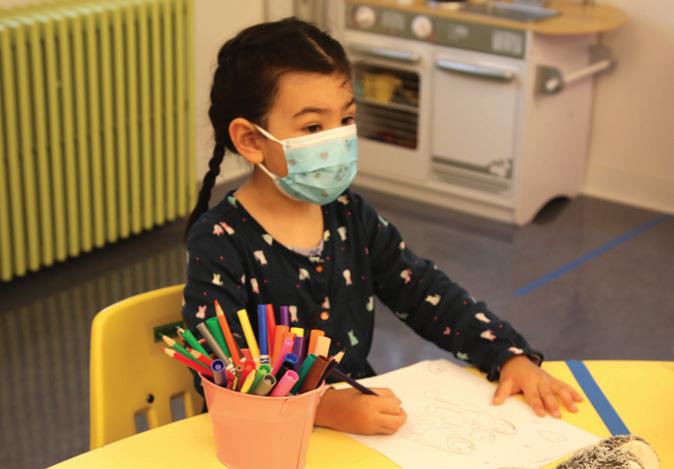

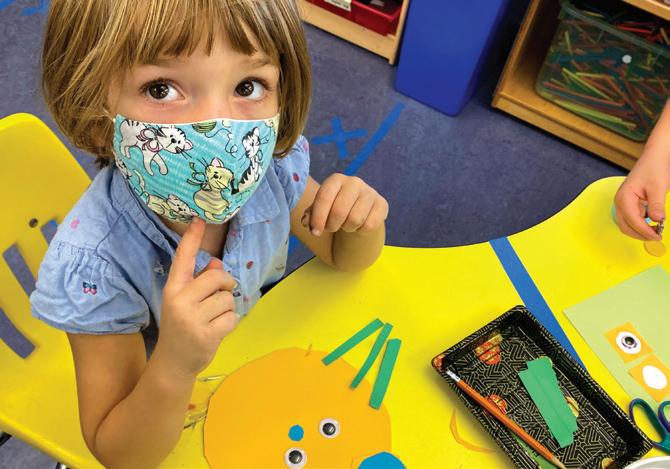
TM
2020 2020
WINNER
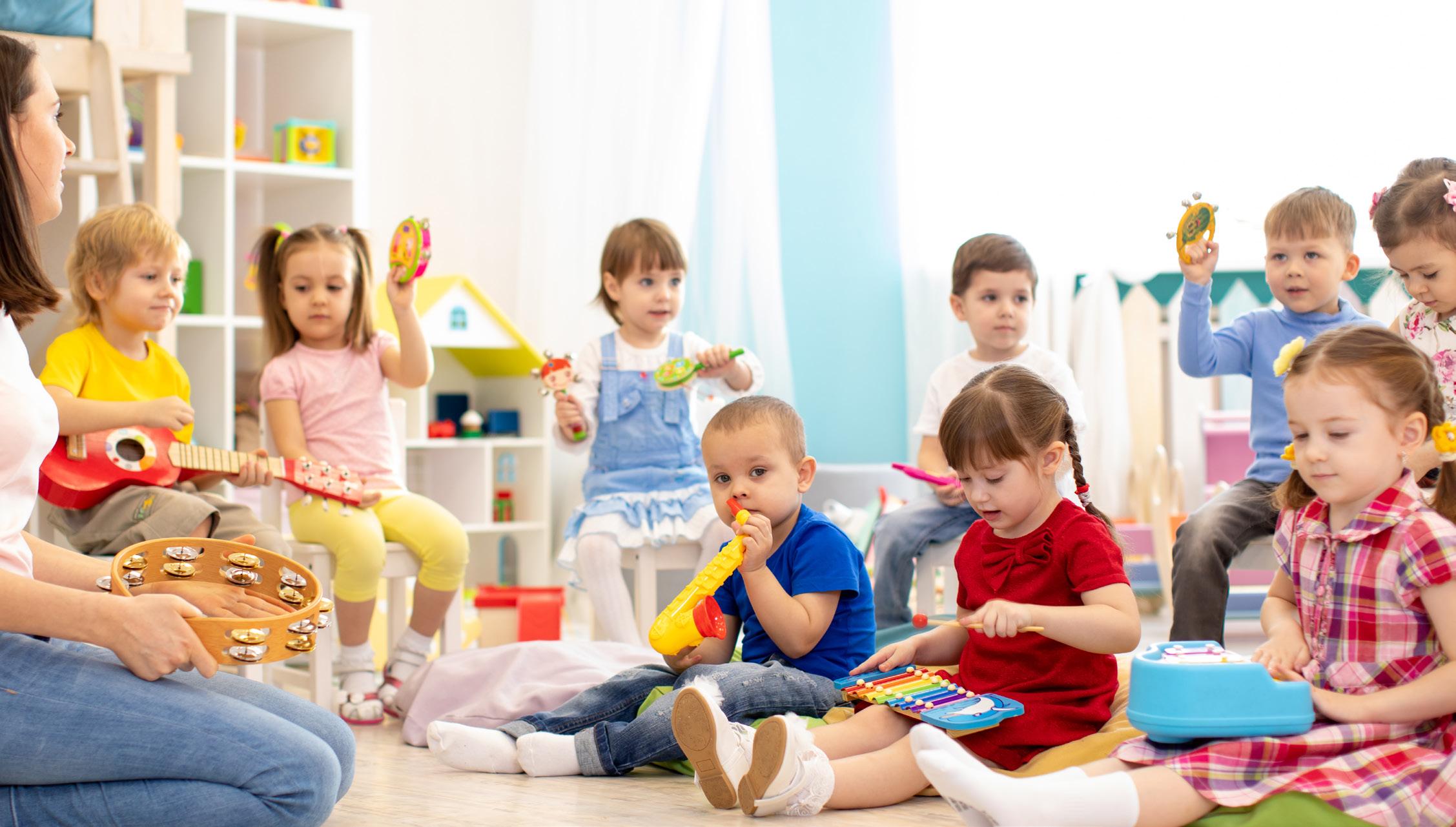
sad?” or “What do you think is going to happen next?” Making reading more interactive makes it more fun and helps build your child’s comprehension skills.
Help your child learn to follow directions.
To help your preschooler get the hang of following directions, practice at home by giving simple commands, such as “Please help me pick up your toys and put them in the toy box.” Then, encourage your child to follow through by offering an incentive to do whatever it is you’re asking. Tell your child that he can play outside once he’s finished putting his toys away. An incentive helps him understand that following directions makes other fun activities possible. If he doesn’t follow your directions and, for example, put his toys away, calmly explain that he won’t be able to play with those toys for the rest of the day or go to the park. Keep it positive by focusing on how clean the playroom will look when you’re done. Then praise him when he’s successful. “You followed my directions so well. Thank you for helping me put your toys in the toy box like I asked you to! That was so helpful.”
Help your child master sharing and turntaking.
concept of sharing yet. But you can help your youngster practice by having her “take turns” with toys and praising her when she shares on her own. To help her develop the empathy that true sharing requires, state what she did and how it makes others feel, such as: “Thank you for sharing. It makes your sister feel good when you share the ball.” Your child should be able to “own” special or new toys, though, so keep them out of sight on playdates or in her room away from siblings.
By kindergarten, children are capable of sharing well and taking turns. If your child isn’t there yet, help her get the hang of it by inviting a friend over for a cooperative task such as baking cookies. If things aren’t going well, calmly ask her to sit out. Pretty soon, she’ll get the idea and want to join in on the fun again. You can also read your child books about sharing and discuss them. In the classic tale Stone Soup, retold by Heather Forest, for example, two hungry travelers make soup from ingredients that everyone in the town contributes. What makes it extra delicious is the sharing it took to make it.
Help your child make friends.
If you get the sense your toddler or preschooler needs a little help in the social department, try hosting playdates with others your child likes or with whom he has common interests. Playdates offer an opportunity
to break away from the group and foster individual friendships. You might begin by asking your preschooler, for example: “How about a playdate with Bobby? I notice that he likes to draw, too.” If you’re not sure who to invite over first, ask your child’s preschool teacher if there’s anyone in the classroom who might be a good match for your child. Then, feel free to go from there and make the rounds so that your child gets the chance to know several children better.
Help your child play host.
Let him pick the snack and ask him beforehand what games and activities he and his friend might like to do. On the playdate, feel free to play along and stay close by to make sure everyone stays safe. But give your child and his friend the chance to play on their own, too. To help things go smoothly, keep playdates to two hours; children start to get tired after that. And keep it simple by inviting just one child over at a time.
Hone your child’s listening skills
At the dinner table and during car rides, help your preschooler hone her listening skills by asking her to wait to speak until her brother has finished his sentence. When it’s her turn, remind her, “Now it’s your turn to talk. Thank you for being patient and for being such a good listener while your brother was talking.” Explain that being a good listener shows respect for the speaker, whether it’s her brother or her teacher and the other students at school who are trying to hear what the teacher has to say. Mention that it’s a two-way street: When she’s a good listener, she’s showing the same kind of respect that she gets when others listen to her. If she continues to interrupt, keep reminding her that she’ll get the chance to talk. Becoming a good listener, like many things, can take lots of practice.
Be There at Pick-Up
Focus on your child. When it’s time to collect your child, be really glad to see him. Make sure you’re not on your cell phone or otherwise distracted. “Pick-up should be all about your child,” Keller says. “Your child wants to know you’re super glad to see him and that you’ve been looking forward to it all day.” ²








